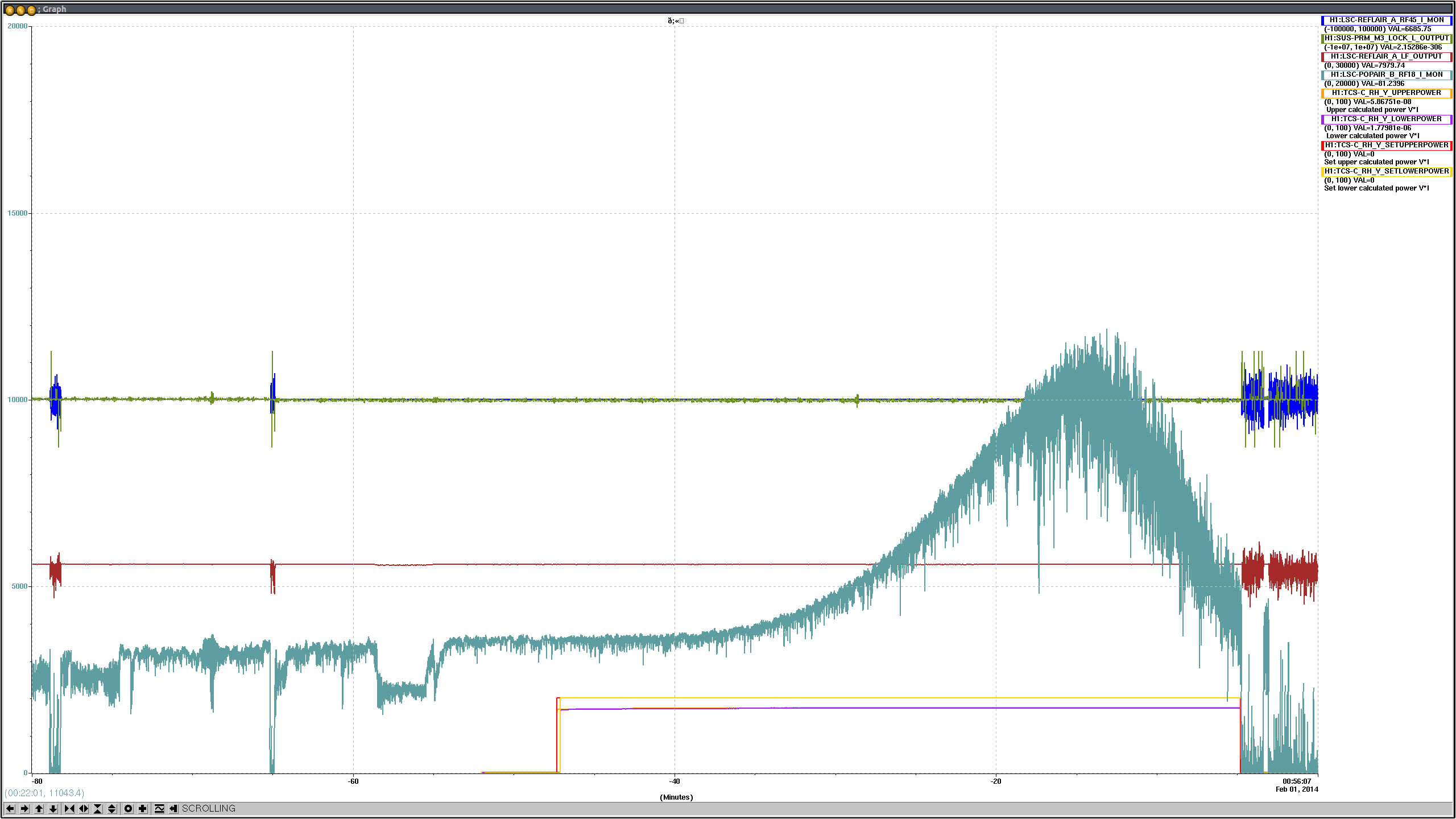Today I used the nanoscan to measure the ITMX direct reflected beam size that makes it through the REFL path onto ISCT1.
I had previously done some more preparation for this measurement (since aLOG entry 9633), measuring the ITMX direct reflected beam power again on ISCT1 to be 31.6uW. This time the green beam was misaligned at the TMS, so was not coming through the X-arm. Also, ITMY was misaligned, and ETMX was misaligned, so there shouldn't have been anything that was adding to the measured power. It seems that either the green light, or X-arm flashes were contributing to the ~50uW I measured last time.
At the same time, I measured the PRM direct reflected beam size using the nanoscan. However, the capture settings I used for logging the data were probably not ideal for this measurement, so I would like to retake this data at some point. In any case, the preliminary measured PRM direct reflected beam sizes were wx=1949um and wy=2094um. These can be compared to the numbers I expect from my model: wx=2170um and wy=2138um.
At this time I tried taking a measurement of the ITMX direct reflected beam, but the nanoscan software kept complaining that the detector was "saturating". At 30uW this seemed unlikely to me, but it prompted me to turn off frame averaging. As soon as I turned off the averaing I saw that the beam was swinging around on the nanoscan, with peak to peak motion of roughly a beam size. This seemed like too much motion to get a decent measurement so I decided to wait until we had some quieter optics in the path between ITMX and ISCT1.
Today I went back into ISCT1 and looked again at the nanoscan data for the ITMX direct reflected beam. The ALS beam was misaligned at TMS, ITMY, ETMX and PRM were all misaligned. The beam motion seemed significantly less for the most part, although I did see it go through quiet and loud times. I logged data at 10Hz for around a minute, which I then averaged offline to get ITMX direct reflected beam sizes of wx=2525um and wy=2510um. The attached plot shows the beam sizes at this location that I expect from my model, for a range of different ITMX lens cases and PR2-PR3 distances. In the cold state, I expect that the ITMX direct reflected beam sizes should be on the cyan line. A naive interpretation at this stage is therefore either that the PR2-PR3 distance is longer than designed, or the ITMX on-thermal lens is weaker than we thought, but there are many variables which still need to be accounted for.


















 so I'll go ahead and add a new filter called "cts2uW" in the SUM_OUTMON paths to give the outputs in uW incident on the PDs.
so I'll go ahead and add a new filter called "cts2uW" in the SUM_OUTMON paths to give the outputs in uW incident on the PDs.